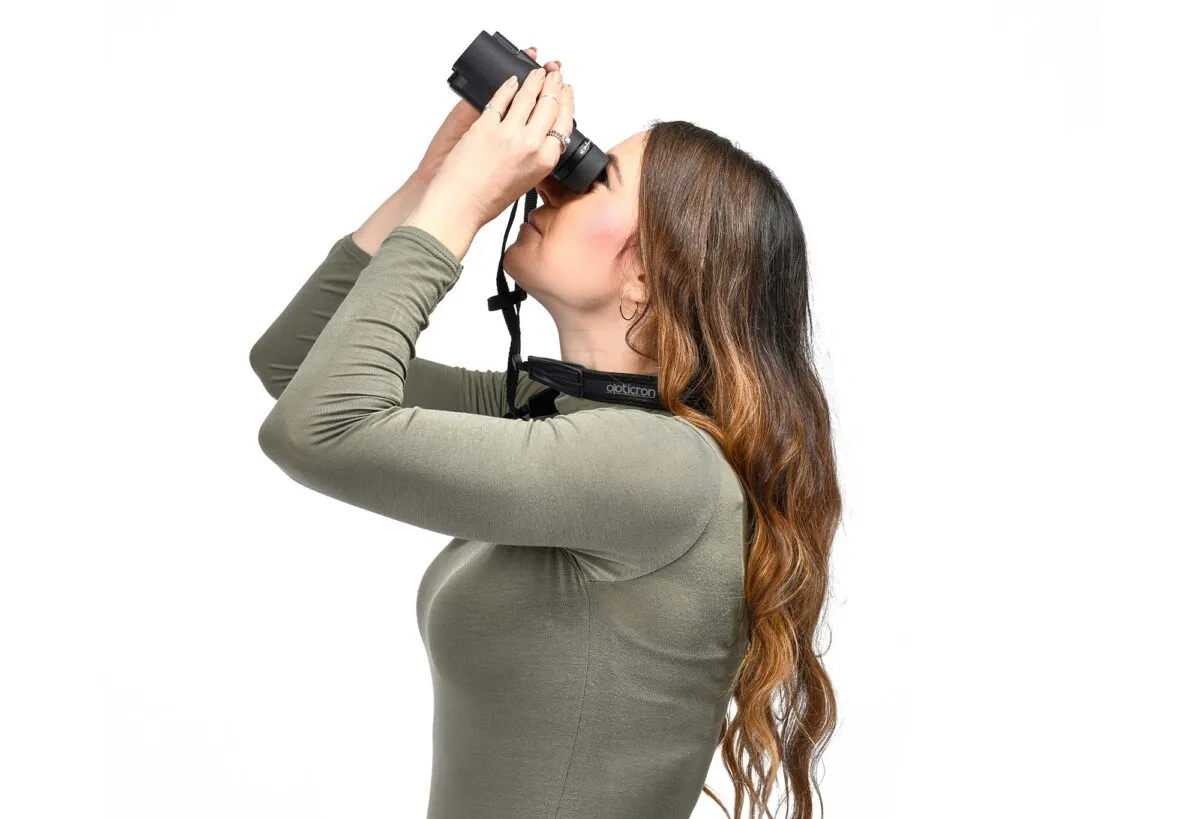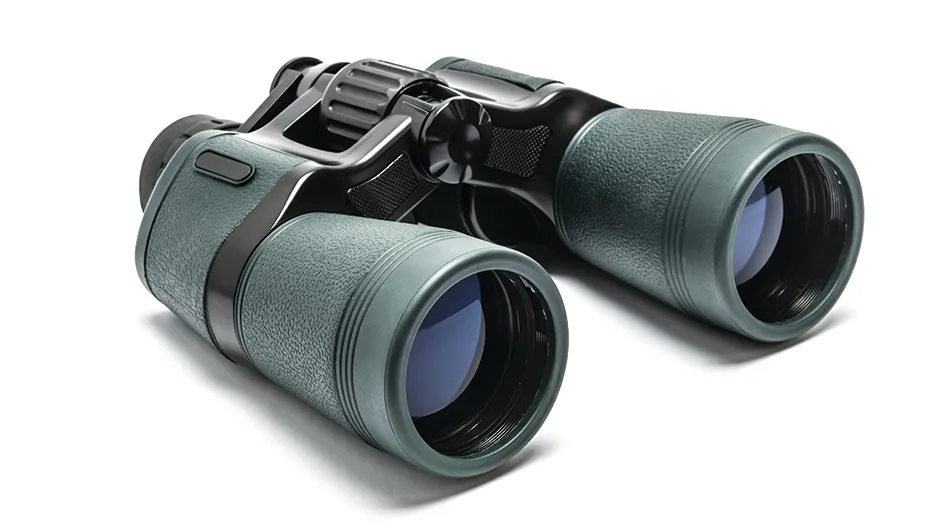There are two kinds of binoculars: the classic Porro-prism style used by astronomers, and the more compact roof-prism style, used mainly for watching wildlife.
But regardless of whether you want to use binoculars for scouring the constellations or for birdwatching, you'll need to know what to look for in a good pair.
You also need to know what your budget is, and how low you can afford to go without compromising on quality.
Below we've selected some of the best budget binoculars under £100 available to buy online, and a brief guide as to what to expect from each model.
But before we delve into our pick of the best value binoculars on the market, some advice on how to choose the right pair.
For more advice, read our guide on stargazing with binoculars or our pick of the best binoculars for astronomy. Or, if sticking with a budget pair isn't a necessity, browse all of our binocular reviews.
How do binoculars work?

A pair of binoculars is basically a device to gather light. They're like two identical telescopes strapped side by side to point in the same direction.
Light from the object you’re looking at has to pass through the objective lens first. This is a convex piece of glass that concentrates the light into a beam that converges on the first Porro prism.
These prisms optically fold the light path inside the binoculars, so there’s a longer focal length and more magnification than you’d expect from the compact size.
They also turn the image the right way round. After that, the light travels through the focusing lenses to end up at your eyes.

What to look for when buying binoculars
Check you can get a really sharp focus with them, using something that is really far away.
If you wear glasses, check that you can still focus the binoculars without them.
Measure the exit pupils of your binoculars. These are the illuminated circles you’ll see in each of the eyepieces when you hold the binoculars away from your eyes. They should be 7mm or less in diameter, and the exit pupils should also be complete circles.
Look through the objective lenses and eyepieces for purple or orangey reflections. These indicate that the surfaces of the prisms and lenses have been anti-reflection coated, which means you won’t lose as much light as it travels through the instrument.
What do the numbers on binoculars mean?

Binoculars are normally specified by two numbers, such 10x50 (‘10 by 50’).
The first number, the ‘10’, is the magnification you get, while the second number, the ‘50’, is the size in millimetres of the objective lenses. These are the ones at the big end of the binoculars, away from your eye.
A magnification of seven is really the smallest that is any use, and you can choose up to 10 before the wobble-factor becomes too great and you need to start using a tripod.
The bigger the objective lenses, the more light your eye gets and the fainter the objects you can see, but the binoculars will be heavier.

How to get the best view through binoculars
Adjust the eyepieces to fit the distance between your eyes and focus them both to give sharp views.
To get the distance between the eyepieces to match the distance between your eyes, called the interpupillary distance, move the two halves of the binoculars around the central hinge until the view through both eyepieces is a clear circle.
Close your right eye and look through the left eyepiece, then adjust the central focusing wheel to sharpen the view.
Now close your left eye and look through the right eyepiece, which has its own focus adjustment. Turn this until you get a sharp focus. The view through both eyepieces will be sharp.
Now that you're an expert on all things binocular, you're ready to make your first purchase. Here are 5 of the best budget binoculars we've reviewed over the years.
5 binoculars under £100
1
Celestron UpClose G2 10x50

Celestron’s UpClose G2 is a lightweight pair of binoculars that come with soft padded case, caps for lenses, a neck-strap and a microfibre cleaning cloth.
Focussing the binoculars, we found the image was crisp in the middle of the field of view. These binoculars are also easy to adjust and focus, which makes them much more enjoyable to use than other models, especially when wearing thick winter gloves.
The UpClose G2 hinge, centre-focus and right-eyepiece dioptre focus all operate smoothly. The eyepiece covers fit pretty will and they are unlikely to be accidentally knocked off, which should mean you don't have to clean the eyepieces of dust and grime too frequently.
As well as this, the binoculars come coated with rubber armour, helping protect against the usual knocks and bumps that come with regular use.
Thumb indents and finder ridges on the prism housings are also welcome. The indents have more texture than the rest of the armour, giving you a nice, secure hold.
Mounting binoculars is also a good option to have if you want to observe fainter or more distant objects. This model comes with a metal bush threaded with a standard ¼-inch Whitworth thread for a tripod adaptor L-bracket.
SQUIRREL_13052417
2
Helios Fieldmaster 7x50

The Helios Fieldmaster 7x50 binoculars come in a soft case with caps that fit well over the front lens and eyepieces. They feel well-balanced and have a smooth-moving central focuser that's well-placed for ease of use.
We also felt there was a good range of dioptre adjustment on the right-hand eyepiece.
Changing interpupillary distance is a simple task with the Helios Fieldmaster, thanks to a nice fluid movement from the central axis.
And, handily, the Fieldmaster will also accept the standard tripod adaptor bracket, making it a good choice for observing fainter and more distant targets.
Being primarily interested in astronomy, we used it to view stars Capella and Procyon and found a field that was sharp across the inner 75%. Any loss in quality was very slight and only distinguishable towards the edge of the view.
To say the least, we were impressed with these binoculars’ clarity of view.
- Buy now from Harrison Telescopes, Bristol Cameras.
3
Olivon QB 7x50

The Olivon QB 7x50 binoculars come with black rubber coating that gives them a firm grip and a good feel. The soft carry case completes the package, making this a nice, compact set-up
The binoculars are well balanced when held in the hand and can also be easily attached to a tripod.
The lens caps fit well and come with tabs that make them easy to grab when removing.
During our observing tests we observed that the focus adjustments felt positive and were simple to perform with the well-positioned wheel
We also were impressed with the multicoated front objective lenses, as these cut internal reflections right down
We would estimate the field of view to be about 6.3°.
This is a great pair of binoculars with good light grasp and impressive views.
4
Opticron Adventurer 10x50 Binoculars

The Adventurer 10x50 comes with a padded nylon case, neck-strap, tethered two-cup rain-guard for the eyepieces, caps for the front lenses, instructions and a cleaning cloth, making this a great all-in-one package.
Hinge, focus wheel and right-eyepiece dioptre ring were all smooth in our tests, and with a minimum interpupillary distance of 55.5mm and 12mm between the eye-cups at this distance, most people should find these binoculars comfortable and pleasing to use.
The objective caps have split tabs built in, which allows them to be threaded onto the strap.
In our tests, the view was clear over the central 75% of the field of view, and otherwise was tolerable except for the outer 5% or so.
The binoculars are light enough to be held steadily, but can also be mounted if need be. What's more, the good eye relief (the distance from the eyepiece to where you place your eye) makes them suitable for use while wearing spectacles.
SQUIRREL_13052427
5
Opticron Adventurer II WP 10x42

The Opticron Adventurer II WP 10x42 comes in a padded case with belt loop, shoulder strap and a cleaning cloth.
Holding the binoculars up to the light, we could see perfectly circular exit pupils, indicating the prisms are a good size.
We were also able to measure the exit pupil at 4.2mm, which told us that the binoculars are not stopped down, giving them potentially better light-gathering ability than some models that are nominally 10x50.
The focus mechanism feels smooth and images from each side merge well, indicating good collimation.
It would be tough for Opticron to produce a better pair of entry-level, roof-prism binoculars at such good value. They feel robust but are lighter and more comfortable than equivalent Porro-prism binoculars. Plus, the nitrogen filling and multi-stage twist-up eye cups are usually only found on more expensive instruments.
SQUIRREL_13052433

